Skeleton keys are uniquely designed keys used to operate numerous old or antique locks, characterized by the simplistic design that allows them to open a variety of locks within a specific parameter. These keys were once a staple for older homes and furniture pieces, serving as universal solutions for different lock types. However, the challenge arises when one needs to find replacement skeleton keys, particularly for vintage or antique furniture, cabinets, or door locks. Due to their age and decreased production, obtaining these keys can be quite difficult.

Fortunately, several avenues exist to procure or create a replacement key. Options range from DIY methods involving careful measurements and crafting to consulting skilled locksmiths who can custom-make keys based on the specific lock structure. Additionally, antique key suppliers offer specialized services to help collectors and homeowners on how to find replacement skeleton keys for old locks, ensuring that these historical pieces remain functional and secure.
Identifying the Type of Lock and Key You Need
Understanding Skeleton Key Locks
Skeleton keys are specifically designed to operate simple warded locks, a mechanism commonly found in older homes, vintage furniture, or antique safes. These locks have a straightforward structure, where specific solid metal barriers, known as wards, are placed within the lock. Skeleton keys bypass the wards, allowing them to rotate inside and open the lock.
There are two primary types of skeleton keys: barrel keys and bit keys. Barrel keys have a hollow shaft that can fit onto a pin within the lock, whereas bit keys come with a solid shaft featuring notches or cuts corresponding to the lock’s wards. Understanding these distinctions is crucial in identifying the appropriate type for your specific lock.
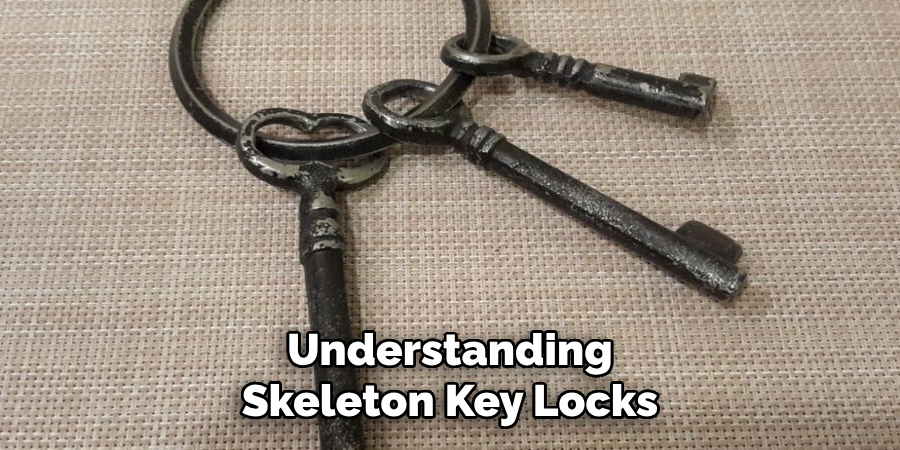
Inspecting the Lock for Key Requirements
To determine the type of skeleton key needed, start by examining the lock itself. Look for key features such as the size and shape of the keyhole and inspect the interior to identify the wards’ configuration. Using a flashlight may help improve visibility when observing these details. Additionally, measuring tools like calipers can help take precise measurements of the keyhole’s diameter and a depth gauge may be used to determine the depth of the lock. These dimensions are instrumental in finding a fitting key.
Check for Stamped Information on the Lock
Another important step involves checking the lock for any stamped information or identifying marks. Some locks may have numbers, letters, or brand insignias etched or stamped onto the metal. This information can be critical, as it often denotes the lock’s original key type, manufacturer, or model number.
Record these details accurately, as they will be incredibly valuable to locksmiths or antique dealers when locating or crafting a suitable replacement key. Access to this data can streamline the process, reducing both time and stress in finding the exact match needed to restore functionality to your cherished antique locks.
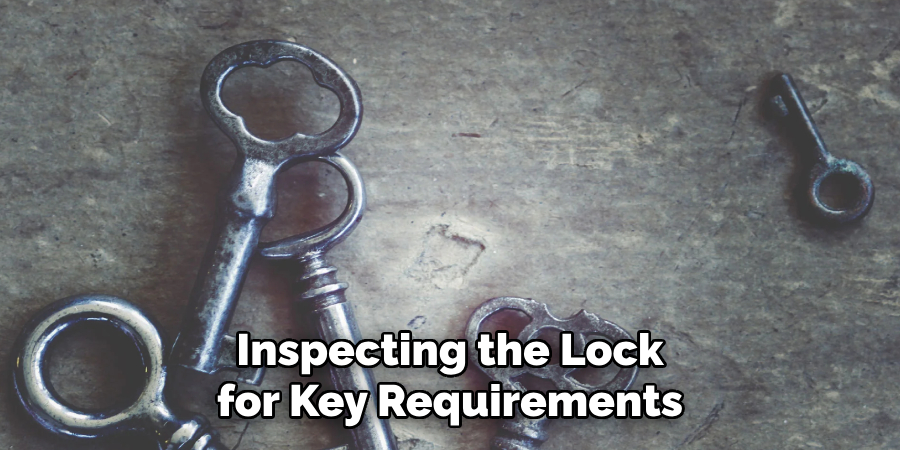
How to Find Replacement Skeleton Keys for Old Locks: Searching for Replacement Skeleton Keys
Online Marketplaces for Skeleton Keys
Online marketplaces such as eBay, Etsy, and Amazon are valuable resources in the quest for replacement skeleton keys. These platforms offer a vast array of vintage and antique skeleton keys, providing numerous options to match your lock requirements. To search effectively, use specific terms like “antique skeleton key,” “barrel key for vintage lock,” or “bit key for warded lock” to narrow down your results.
Pay close attention to the dimensions, materials, and descriptions provided to ensure compatibility with your lock before purchasing. The advantages of buying from online sellers include access to an extensive selection of keys and the convenience of browsing from home. However, be mindful of potential risks, such as receiving keys that may not fit or match your lock perfectly. Always check the seller’s return policy and customer reviews to mitigate these risks.
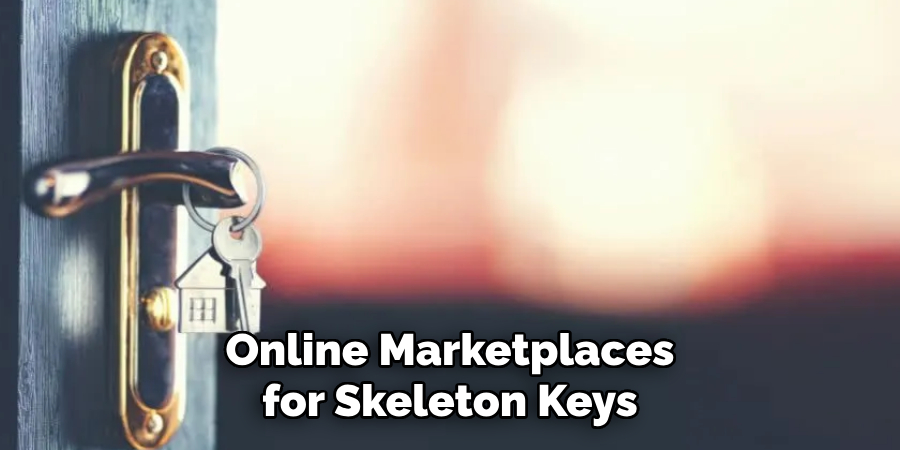
Visiting Antique Stores or Markets
Local antique stores and flea markets can be exceptional venues for discovering replacement skeleton keys. Unlike online shopping, these physical locations allow you to see and handle the keys directly, providing a tactile sense of their fit and quality. When visiting these stores or markets, bring your lock along to test key compatibility on-site.
This hands-on approach ensures the key you choose will work with your lock. Be prepared to exercise patience, as finding a rare or perfect match may take time. Regular visits to these markets and developing good relationships with local vendors can increase your chances of finding the right key for your antique lock over time.
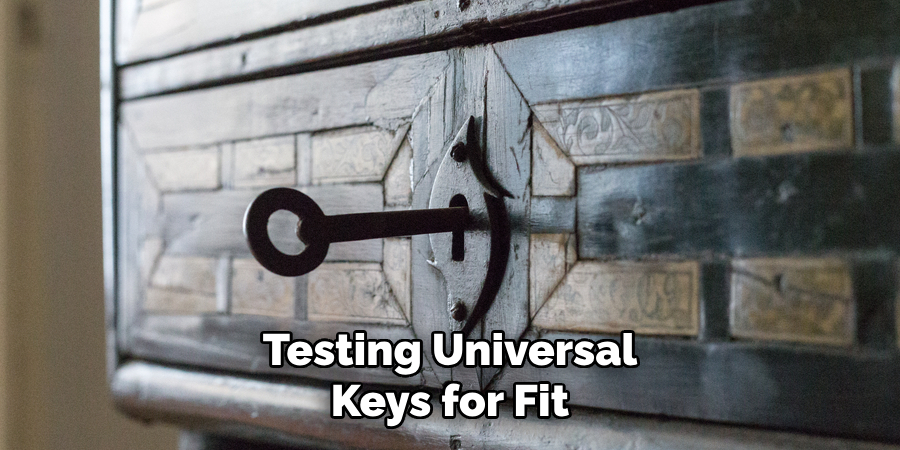
Exploring Hardware Stores or Locksmith Shops
Some specialized hardware stores and locksmith shops may carry universal skeleton keys or key sets that are designed to work with common antique locks. These businesses often have knowledgeable staff who can assist in identifying potential key matches based on the measurements and details of your lock. Don’t hesitate to ask local locksmiths if they keep an inventory of old or universal skeleton keys; they may have exactly what you need.
Additionally, locksmiths can sometimes craft a custom skeleton key if you provide the necessary specifications. While options may be limited compared to online sources, these establishments offer professional guidance and immediate in-person service, making them a viable solution for finding replacement skeleton keys.
How to Find Replacement Skeleton Keys for Old Locks: Trying Universal Skeleton Keys
What Are Universal Skeleton Keys?
Universal skeleton keys are versatile tools designed to fit a variety of old locks, especially those with simpler warded mechanisms. Unlike traditional keys, which require precise cuts and notches to align with complex lock wards, universal skeleton keys possess a more generalized shape that bypasses the need for customization. These keys can effectively operate simpler warded locks, the type often found in antique furniture, cabinets, and some older doors, without requiring the exact match of a custom-crafted key.
Where to Find Universal Skeleton Keys
Locating universal skeleton keys can be accomplished through multiple channels. Online retailers often provide a broad selection of these keys, offering the convenience of comparing different makes and styles from the comfort of your home. Websites specializing in vintage or antique hardware, such as Amazon or eBay, may stock keys from reputable brands like Hillman or Antique Hardware & Home.
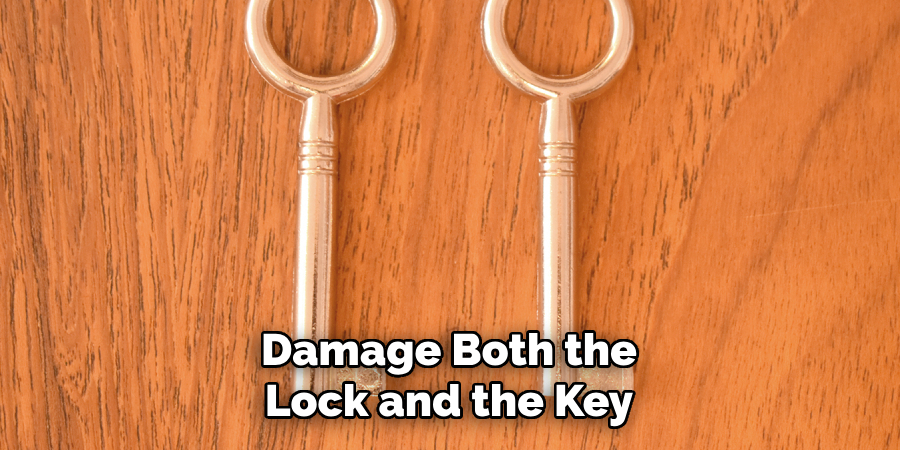
In addition, locksmith shops and hardware stores specializing in antique hardware may carry universal skeleton keys. These physical locations offer the benefit of expert advice from staff who can guide you in selecting the most appropriate key for your specific lock.
Testing Universal Keys for Fit
Once you’ve acquired a universal skeleton key, the next essential step is testing it. Begin by gently inserting the key into your lock. It’s crucial to use a light touch as you turn the key, paying close attention to any resistance. Overcoming force could damage both the lock and the key, undermining the entire effort to restore functionality. In some cases, universal keys may need slight adjustments to operate smoothly; this could include filing down certain areas of the key to ensure it moves freely within the lock.
Always take care when making these modifications to avoid excessive alteration, which could render the key ineffective. Remember, patience and precision are key when working with universal skeleton keys to achieve your lock’s best fit and performance.
Working with a Locksmith to Make a Replacement Key
When to Contact a Locksmith
In certain instances, contacting a professional locksmith is the most prudent choice, particularly when dealing with rare or intricately designed locks that necessitate a custom skeleton key. Such a lock may have unique features that online or store-bought universal keys cannot address effectively. Skilled locksmiths can analyze the internal mechanisms of these complex locks, leveraging their knowledge to create a key that fits precisely.
When faced with complicated lock structures or when previous attempts at finding a universal key have failed, seeking professional help ensures a higher likelihood of success and prevents potential damage to the lock.
Custom Key Making Process
The custom key-making process begins with the locksmith’s expertise in impressioning or disassembling the lock to understand its internal wards and intricacies. Impressioning involves inserting a blank key into the lock and applying pressure to leave marks that indicate where to cut the key to match the lock’s details. In more intricate cases, a locksmith may disassemble the lock, providing a clear view of the wards and creating a key with precise notches and dimensions.
It is crucial to select a locksmith experienced with antique locks, as these mechanisms differ significantly from modern counterparts and require specialized skills.
Cost of Locksmith Services for Skeleton Keys
The cost of hiring a locksmith to craft a custom skeleton key can vary widely, generally ranging from $50 to $200 or more. Several factors influence this price range, including the lock’s complexity, the rarity of the skeleton key design required, and the need for specialized tools or techniques. If the lock is especially complex or entails rare key features, it may incur higher costs due to the additional skill and labor involved. Nonetheless, investing in a professional locksmith’s services can save time and ensure quality, ultimately restoring the full functionality of your antique lock.
DIY Method: Impressioning a Key for Antique Locks
Understanding the Impressioning Process
Key impressioning is a traditional locksmithing technique that involves crafting a key to fit an antique lock by meticulously creating cuts and notches based on the lock’s unique internal structure. The process begins by inserting a blank skeleton key into the lock and applying gentle pressure while turning it. This action leaves discernible key markings indicating where material should be filed away. Essentially, these marks act like a blueprint, guiding you to shape the key so it fits seamlessly with the lock’s wards or pins.
Step-by-Step Instructions for Key Impressioning
Materials Needed:
- Blank skeleton key (available at locksmiths or antique stores)
- Metal file
- Key clamp or pliers
- Lubricant (optional, to ease the key’s movement)
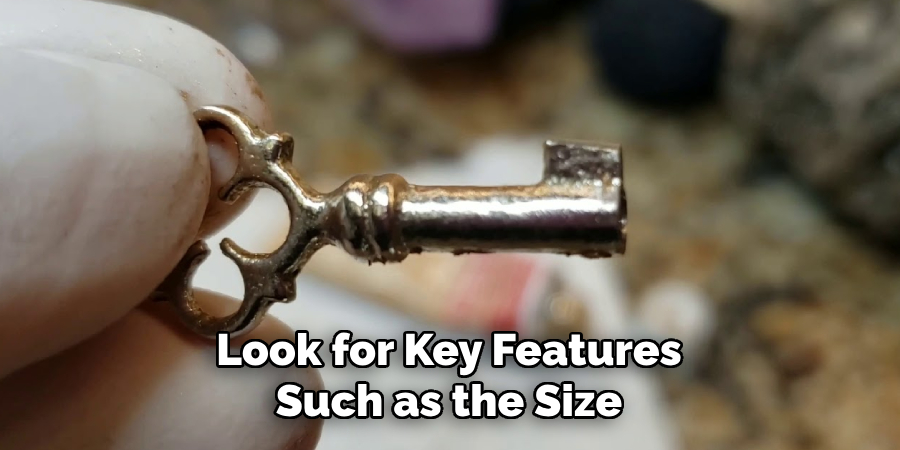
Steps:
- Insert the blank key into the lock. While applying slight pressure, gently turn it. This step requires a delicate touch to ensure that the pressure exerted does not damage either the blank key or the lock.
- Remove the key and closely inspect it. Look for slight indentations or scratches where the lock’s wards or pins have come into contact with the blank key.
- Use a metal file to carefully create notches at the marked points. File off small amounts of material at a time, frequently checking the fit by reinserting the key into the lock.
- Repeat the process of inserting, marking, and filing until the key turns smoothly and unlocks the lock. Patience is crucial here, as creating the perfect fit might require multiple iterations.
- Tips for working slowly and carefully: This process must be performed gently to avoid overfiling and accidentally removing too much material. If you suspect the key is becoming too thin or fragile, it may be wise to start fresh with a new blank.
When Impressioning May Not Work
While impressioning can be an effective DIY solution for creating keys for antique locks, there are situations where this method may fall short. If the lock mechanisms are significantly worn out, obtaining a clear and accurate impression of the blank key can become challenging. Similarly, if the blank key does not fit well due to size mismatches or unusual lock angles, impressioning may not yield a functional key. In such cases, consulting with a professional locksmith might be necessary to ensure the lock isn’t damaged and a reliable solution is secured.
Conclusion
In summary, there are multiple approaches to exploring how to find replacement skeleton keys for old locks. From purchasing universal keys that offer a potential quick fix to enlisting the expertise of professional locksmiths, each method serves a specific need and complexity level. Understanding the intricacies of antique locks is paramount, as they require a precise touch and patient approach. Both professional services, with custom key-making and DIY strategies such as impressioning, allow for adaptability and creativity in solving key replacement challenges.
Keeping in mind that precision and patience are vital, enthusiasts and owners of antique locks are encouraged to consider multiple pathways. This holistic approach not only ensures the full functionality of the lock system but also preserves its historical value, making the effort of finding the perfect key a rewarding endeavor.
About
Safety Fic is a distinguished figure in the world of Diy design, with a decade of expertise creating innovative and sustainable Diy solutions. His professional focus lies in merging traditional craftsmanship with modern manufacturing techniques, fostering designs that are both practical and environmentally conscious. As the author of diy, Safety Fic delves into the art and science of Safety Fic-making, inspiring artisans and industry professionals alike.
Education RMIT University
(Melbourne, Australia) Associate Degree in Design (Safety Fic) Focus on sustainable design, industry-driven projects, and practical craftsmanship. Gained hands-on experience with traditional and digital manufacturing tools, such as CAD and CNC software.
Nottingham Trent University
(United Kingdom) Bachelor’s in diyfastly.com and Product Design (Honors) Specialized in product design with a focus on blending creativity with production techniques. Participated in industry projects, working with companies like John Lewis and Vitsoe to gain real-world insights.
Publications and Impact
In diy, Safety Fic his insights on indoor design processes, materials, and strategies for efficient production. His writing bridges the gap between artisan knowledge and modern industry needs, making it a must-read for both budding designers and seasoned professionals.
